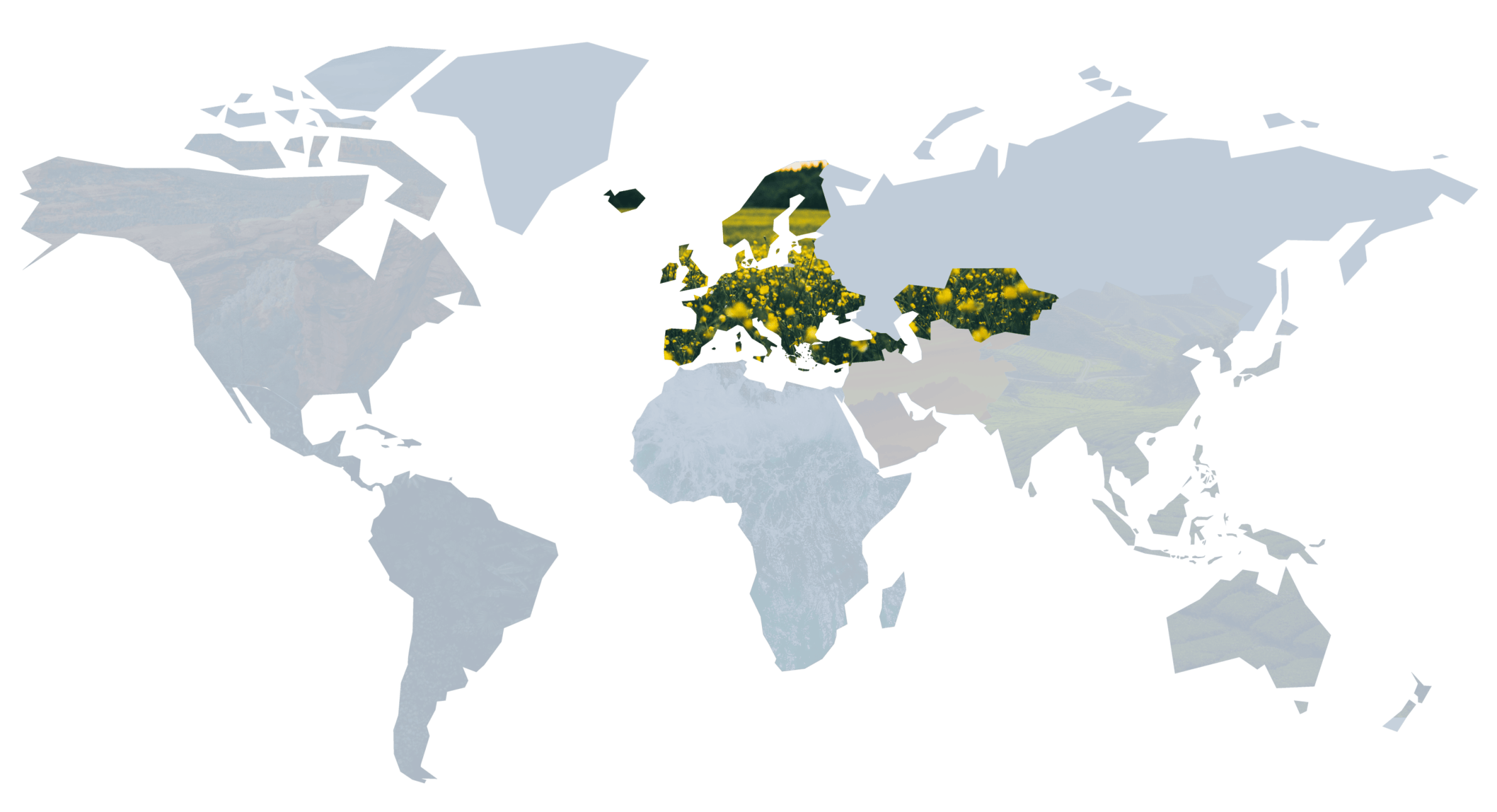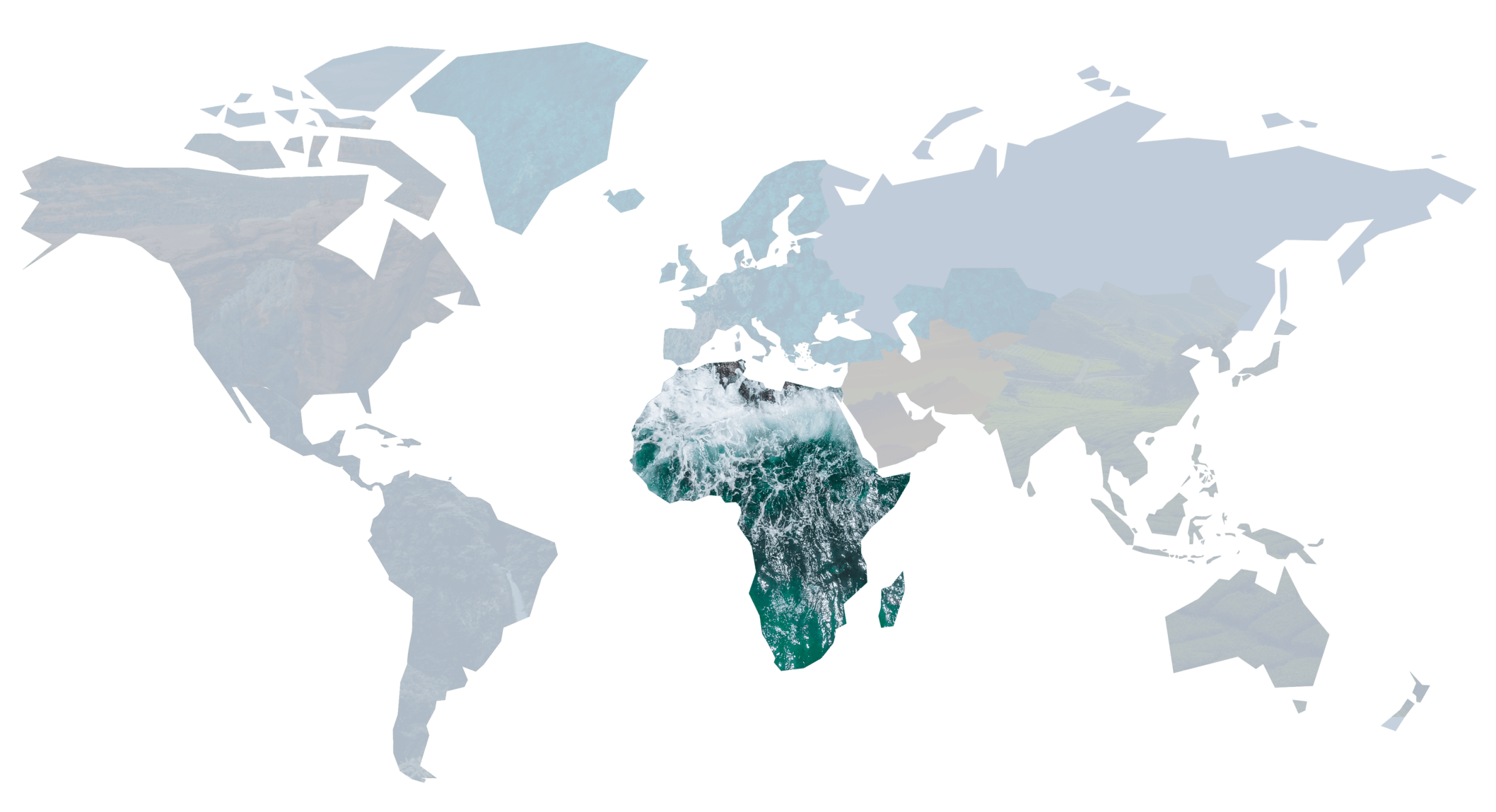

Asia Pacific


Middle East


Africa


Europe


North America



Latin America
and Caribbean

Improving global skies
Every region has been affected by the coronavirus pandemic, but strategic developments remain important in the transition to the new normal. airspace explores some examples of how ATM has risen to the challenge across the globe.

Click on a region to read more



Improving global skies

Click on a region to read
Every region has been affected by the coronavirus pandemic, but strategic developments remain important in the transition to the new normal.

North America
To get the region moving, the US has published its Runway to Recovery that outlines steps to re-establish the full health of the air transportation system.
The Federal Aviation Administration (FAA) has a big role to play and will continue to modernise its air transportation system. Most of the foundational work for NextGen has been done and the aim is to maximise government and industry investments by increasing capabilities in additional locations to provide more flexibility, predictability, throughput and efficiency.
Making the most of the automatic dependent surveillance–broadcast (ADS-B) will be a key to driving more benefits. Overlapping ADS-B and legacy radar coverage provides opportunities to right-size FAA surveillance infrastructure.
The FAA also recognises the potential of space-based ADS-B to provide surveillance in locations where ground stations cannot be installed, such as oceanic airspace. Current evaluation programs that are under way will help to assess the benefits of this technology.
Data Communications (Data Comm) is another important ingredient. Data Comm services are operational at 62 airports and three en-route facilities: Kansas City, Indianapolis and Washington Centres. The deployment to the remaining 17 en-route centres is on hold due to COVID but should be complete in the 2021-2022 timeframe. Full services capabilities will follow in the 2023-2024 timeframe.
In Canada, NAV CANADA continued to monitor and manage 18 million square kilometres of Canadian and oceanic airspace during the outbreak. It implemented several precautionary measures, including restricting workplace access to essential employees and enhancing cleaning and hygiene measures.
Employee schedules have also been realigned into a crew structure, so they work with the same colleagues every day, reducing exposure.
Perhaps most importantly, communication with employees and stakeholders has become increasingly important. There are regular updates to ensure safe and efficient operations, and, for employees who require counselling, there is an Employee and Family Assistance Programme hotline in addition to peer support programmes.
The US was able to continue to provide requested domestic services as the virus proliferated but overall demand dropped considerably. By the end of July, airlines had restored 50% of their 2019 schedule levels, according to the International Air Transport Association.





Improving global skies

Click on a region to read
Every region has been affected by the coronavirus pandemic, but strategic developments remain important in the transition to the new normal.

Latin America and Caribbean
Nevertheless, the geography of the region means aviation will be critical to connectivity and getting economies moving again.
As with other regions, matching capacity with demand, cross-border collaboration and sustainability are at the heart of the restart.
The CANSO ATFM Data Exchange Network for the Americas (CADENA), for example, continues to ensure smoother traffic flows across the region and serve the growing need for better collaboration.
The FAA ATO Space Operations office recently joined CADENA, a sign of the critical role that space launch and recovery plays within the aviation industry. The collaboration will ensure operational safety throughout the global airspace system and highlights the importance of timely communication and the issuance of NOTAMs.
CADENA allows partners throughout the aviation value chain to share vital data and common situational awareness. Most importantly, it is demonstrating ATM leadership in the region as a practical example of what can be achieved in numerous areas of operations.
Meanwhile, individual ANSPs are coming to terms with the new normal. Empresa Cubana de Navegación Aérea (ECNA), Cuba’s ANSP, has suffered a significant decrease in revenue but has managed to keep all staff in employment with many working from home where possible.
Unfortunately, it has had to delay investment in future work but is hoping that a traffic recovery will allow it to resume its plans at the earliest opportunity.
Balancing capacity with efficiency and environmental protection is at the heart of ECNA’s strategy once it does return to a better financial position. A custom-made Mobile Contingency Centre and an ATC Simulator are two of the major components.
ECNA is also deploying new VHF, multilateration and automatic dependent surveillance – broadcast stations across the country to increase the communications and surveillance coverage and to serve as a backup for the existing network.
In Argentina, local ANSP, EANA, has renegotiated several services and investment contracts, although this was not specifically because of the COVID impact but rather an attempt to align services and market prices to its business strategy.
It is now working to obtain financing so that it does not have to cancel any investments for 2020-2024.
Latin American and the Caribbean is behind the rest of the world in its recovery from COVID-19, but figures suggest a reduction in air traffic demand close to 60% this year.





Improving global skies

Click on a region to read
Every region has been affected by the coronavirus pandemic, but strategic developments remain important in the transition to the new normal.

Europe
European ANSPs helped airline colleagues through the deferral of more than €1 billion in fees under the EU’s Performance and Charging Scheme. CANSO saw this as a short-term, one-off initiative. Their overall position is that any solution for the Scheme to cover the coming years must work for all branches of aviation.
CANSO has also joined other European aviation associations to call for EU funding to promote the uptake of green technologies in the sector, in line with the EU’s Green Deal.
Indeed, sustainability is likely to become central to the industry’s license to grow in the region. Digitisation will be vital, contributing to an effective environmental improvement of the sector and helping ANSPs to be more resilient and better prepared to handle crises in the future.
Digital towers are a key technology in this regard. NATS is introducing one at London City. And in Sweden, at Örnsköldsvik Airport, LFV and its partners have established a research environment for the development of autonomous and remotely controlled airports.
HungaroControl’s digital tower programme, meanwhile, has gone from strength to strength, successfully operating while an upgrade was undertaken in Budapest Airport’s physical tower.
Elsewhere in Europe, German ANSP, DFS, has a number of initiatives that will help it to meet capacity efficiently. There is a ‘fly as filed’ programme to ensure airlines are more closely aligned with their filed flight plans. It is also working with Airtopsoft to develop AirMagic, an operational decision support system that delivers more efficient staff planning and allocation in area control centres (ACC). AirMagic uses fast-time simulations to link staff planning with traffic forecasts.
Meanwhile, DSNA, the French ANSP, is evaluating an air traffic flow management tool called SINAPS, deployed at Bordeaux area control centre (ACC) since June 2019.
All aviation stakeholders are struggling in a badly hit region. Over 90% of European flights were grounded when COVID-19 hit its peak in April 2020, and demand for the year will be 56% lower than the 2019 level. Quarantines slowed the uptick and passenger demand is not predicted to hit pre-virus levels for some considerable time. But the pause will at least allow the region to reframe capacity issues.





Improving global skies

Click on a region to read
Every region has been affected by the coronavirus pandemic, but strategic developments remain important in the transition to the new normal.

Asia Pacific
As the industry restarts, it will be important to match capacity to demand and ensure flights are handled safely and seamlessly. Distributed Multi-Nodal Air Traffic Flow Management’s (ATFM) will be key. During the COVID-19 pandemic, ATFM prepared the region for possible capacity disruptions due to infection-related incidents and it will also allow the eventual recovery of traffic demand post-outbreak.
ATFM has its origins in a 2010 CANSO initiative exploring collaborative decision making between the Civil Aviation Authority of Singapore (CAAS) and Aeronautical Radio of Thailand (AEROTHAI) on the Singapore-Bangkok route but has widened its scope.
The project has recently been renamed the Asia-Pacific Cross-Border Multi-Nodal ATFM Collaboration (AMNAC). This recognises the project’s achievements and collaborative efforts in moving cross-border ATFM operations from concept through operational trials and towards effective operational implementation
Once fully implemented, an Airbus Prosky study projected a net benefit of up to $1.4 billion – a significant benefit in cash-strapped times.
ATFM requires close coordination at a regional level, for example through regular web-conferences giving updates on ATM-related news due to the COVID-19 situation. It will also drive forward system-wide information management (SWIM) through its information exchange.
The ICAO APAC SWIM Task Force is working on a SWIM-based solution that supports ATFM data elements. In addition, AMNAC is developing or identifying information exchange models, SWIM technical specifications and the technical infrastructure required to support ATFM service.
The impact of COVID-19 on countries within the large Asia Pacific region has varied enormously. Overall, air traffic is predicted to fall 53.8% for 2020.





Improving global skies

Click on a region to read
Every region has been affected by the coronavirus pandemic, but strategic developments remain important in the transition to the new normal.

Africa
To answer this need, the CANSO Mombasa Air Traffic Flow Management (ATFM) Roadmap is moving full speed ahead. Implementing ATFM processes is a major milestone on the road to a seamless sky. The basic idea is for regional stakeholders to work together through collaborative decision making.
The Mombasa ATFM Roadmap divides Africa into four regions (southern, eastern, western, and central). Though existing flight information regions will be preserved, harmonisation will be increased within each sector with work ongoing throughout 2020.
Enhancing safety has become especially important due to the variable traffic levels seen throughout the pandemic. The CANSO Africa ANSP Peer Review Mechanism is a joint initiative between African ANSPs to improve aviation safety and seamless ATM performance across Africa. It encourages African ANSPs to work in partnership with each other to assess safety management systems (SMS) and other operational requirements, share experiences and learn about measures for improvement in safety and operational performance.
Safety, with specific emphasis on risk management and Just Culture implementation, will always be the top priority, and will continue to be a focal point for African efforts in the years ahead as the continent slowly edges back to pre-COVID-19 demand levels.
African aviation is expected to experience close to a 60% drop in demand for 2020. This devastating impact, caused by the COVID-19 outbreak, has heightened the need for cross-border collaboration.





Improving global skies

Click on a region to read
Every region has been affected by the coronavirus pandemic, but strategic developments remain important in the transition to the new normal.

Middle East
For example, the Middle East ATM Enhancement Programme (MAEP) continues to drive toward safe, sustainable and seamless skies in the region.
As might be expected from the region, there is a great deal of innovation too.
Dubai has issued a new law on drones aimed at promoting this emerging sector. The law is a vital component of the Dubai Sky Dome project that is designed to provide the Emirate with a structural eco-system for drones. Dubai is also looking closely at the digital tower concept.
Overall, progressive aviation policies in the region seem certain to assist aviation recovery as quickly as possible. Airports are continuing with expansion plans and so the development and modernisation of air traffic control are also proceeding apace.
The major Middle East hubs were severely affected as international travel all but stopped. Nevertheless, the strategy to improve a military-curtailed airspace remains in place.



Improving
global skies

Every region has been affected by the coronavirus pandemic, but strategic developments remain important in the transition to the new normal. airspace explores some examples of how ATM has risen to the challenge across the globe.

North America

North America
The US was able to continue to provide requested domestic services as the virus proliferated but overall demand dropped considerably. By the end of July, airlines had restored 50% of their 2019 schedule levels, according to the International Air Transport Association.
To get the region moving, the US has published its Runway to Recovery that outlines steps to re-establish the full health of the air transportation system.
The Federal Aviation Administration (FAA) has a big role to play and will continue to modernise its air transportation system. Most of the foundational work for NextGen has been done and the aim is to maximise government and industry investments by increasing capabilities in additional locations to provide more flexibility, predictability, throughput and efficiency.
Making the most of the automatic dependent surveillance–broadcast (ADS-B) will be a key to driving more benefits. Overlapping ADS-B and legacy radar coverage provides opportunities to right-size FAA surveillance infrastructure.
The FAA also recognises the potential of space-based ADS-B to provide surveillance in locations where ground stations cannot be installed, such as oceanic airspace. Current evaluation programs that are under way will help to assess the benefits of this technology.
Data Communications (Data Comm) is another important ingredient. Data Comm services are operational at 62 airports and three en-route facilities: Kansas City, Indianapolis and Washington Centres. The deployment to the remaining 17 en-route centres is on hold due to COVID but should be complete in the 2021-2022 timeframe. Full services capabilities will follow in the 2023-2024 timeframe.
In Canada, NAV CANADA continued to monitor and manage 18 million square kilometres of Canadian and oceanic airspace during the outbreak. It implemented several precautionary measures, including restricting workplace access to essential employees and enhancing cleaning and hygiene measures.
Employee schedules have also been realigned into a crew structure, so they work with the same colleagues every day, reducing exposure.
Perhaps most importantly, communication with employees and stakeholders has become increasingly important. There are regular updates to ensure safe and efficient operations, and, for employees who require counselling, there is an Employee and Family Assistance Programme hotline in addition to peer support programmes.

Back


Latin America and Caribbean
Latin American and the Caribbean is behind the rest of the world in its recovery from COVID-19, but figures suggest a reduction in air traffic demand close to 60% this year.
Nevertheless, the geography of the region means aviation will be critical to connectivity and getting economies moving again.
As with other regions, matching capacity with demand, cross-border collaboration and sustainability are at the heart of the restart.
The CANSO ATFM Data Exchange Network for the Americas (CADENA), for example, continues to ensure smoother traffic flows across the region and serve the growing need for better collaboration.
The FAA ATO Space Operations office recently joined CADENA, a sign of the critical role that space launch and recovery plays within the aviation industry. The collaboration will ensure operational safety throughout the global airspace system and highlights the importance of timely communication and the issuance of NOTAMs.
CADENA allows partners throughout the aviation value chain to share vital data and common situational awareness. Most importantly, it is demonstrating ATM leadership in the region as a practical example of what can be achieved in numerous areas of operations.
Meanwhile, individual ANSPs are coming to terms with the new normal. Empresa Cubana de Navegación Aérea (ECNA), Cuba’s ANSP, has suffered a significant decrease in revenue but has managed to keep all staff in employment with many working from home where possible.
Unfortunately, it has had to delay investment in future work but is hoping that a traffic recovery will allow it to resume its plans at the earliest opportunity.
Balancing capacity with efficiency and environmental protection is at the heart of ECNA’s strategy once it does return to a better financial position. A custom-made Mobile Contingency Centre and an ATC Simulator are two of the major components.
ECNA is also deploying new VHF, multilateration and automatic dependent surveillance – broadcast stations across the country to increase the communications and surveillance coverage and to serve as a backup for the existing network.
In Argentina, local ANSP, EANA, has renegotiated several services and investment contracts, although this was not specifically because of the COVID impact but rather an attempt to align services and market prices to its business strategy.
It is now working to obtain financing so that it does not have to cancel any investments for 2020-2024.

Back


Europe
All aviation stakeholders are struggling in a badly hit region. Over 90% of European flights were grounded when COVID-19 hit its peak in April 2020, and demand for the year will be 56% lower than the 2019 level. Quarantines slowed the uptick and passenger demand is not predicted to hit pre-virus levels for some considerable time. But the pause will at least allow the region to reframe capacity issues.
European ANSPs helped airline colleagues through the deferral of more than €1 billion in fees under the EU’s Performance and Charging Scheme. CANSO saw this as a short-term, one-off initiative. Their overall position is that any solution for the Scheme to cover the coming years must work for all branches of aviation.
CANSO has also joined other European aviation associations to call for EU funding to promote the uptake of green technologies in the sector, in line with the EU’s Green Deal.
Indeed, sustainability is likely to become central to the industry’s license to grow in the region. Digitisation will be vital, contributing to an effective environmental improvement of the sector and helping ANSPs to be more resilient and better prepared to handle crises in the future.
Digital towers are a key technology in this regard. NATS is introducing one at London City. And in Sweden, at Örnsköldsvik Airport, LFV and its partners have established a research environment for the development of autonomous and remotely controlled airports.
HungaroControl’s digital tower programme, meanwhile, has gone from strength to strength, successfully operating while an upgrade was undertaken in Budapest Airport’s physical tower.
Elsewhere in Europe, German ANSP, DFS, has a number of initiatives that will help it to meet capacity efficiently. There is a ‘fly as filed’ programme to ensure airlines are more closely aligned with their filed flight plans. It is also working with Airtopsoft to develop AirMagic, an operational decision support system that delivers more efficient staff planning and allocation in area control centres (ACC). AirMagic uses fast-time simulations to link staff planning with traffic forecasts.
Meanwhile, DSNA, the French ANSP, is evaluating an air traffic flow management tool called SINAPS, deployed at Bordeaux area control centre (ACC) since June 2019.

Back


Back

Asia Pacific
The impact of COVID-19 on countries within the large Asia Pacific region has varied enormously. Overall, air traffic is predicted to fall 53.8% for 2020.
As the industry restarts, it will be important to match capacity to demand and ensure flights are handled safely and seamlessly. Distributed Multi-Nodal Air Traffic Flow Management’s (ATFM) will be key. During the COVID-19 pandemic, ATFM prepared the region for possible capacity disruptions due to infection-related incidents and it will also allow the eventual recovery of traffic demand post-outbreak.
ATFM has its origins in a 2010 CANSO initiative exploring collaborative decision making between the Civil Aviation Authority of Singapore (CAAS) and Aeronautical Radio of Thailand (AEROTHAI) on the Singapore-Bangkok route but has widened its scope.
The project has recently been renamed the Asia-Pacific Cross-Border Multi-Nodal ATFM Collaboration (AMNAC). This recognises the project’s achievements and collaborative efforts in moving cross-border ATFM operations from concept through operational trials and towards effective operational implementation
Once fully implemented, an Airbus Prosky study projected a net benefit of up to $1.4 billion – a significant benefit in cash-strapped times.
ATFM requires close coordination at a regional level, for example through regular web-conferences giving updates on ATM-related news due to the COVID-19 situation. It will also drive forward system-wide information management (SWIM) through its information exchange.
The ICAO APAC SWIM Task Force is working on a SWIM-based solution that supports ATFM data elements. In addition, AMNAC is developing or identifying information exchange models, SWIM technical specifications and the technical infrastructure required to support ATFM service.


Africa
African aviation is expected to experience close to a 60% drop in demand for 2020. This devastating impact, caused by the COVID-19 outbreak, has heightened the need for cross-border collaboration.
To answer this need, the CANSO Mombasa Air Traffic Flow Management (ATFM) Roadmap is moving full speed ahead. Implementing ATFM processes is a major milestone on the road to a seamless sky. The basic idea is for regional stakeholders to work together through collaborative decision making.
The Mombasa ATFM Roadmap divides Africa into four regions (southern, eastern, western, and central). Though existing flight information regions will be preserved, harmonisation will be increased within each sector with work ongoing throughout 2020.
Enhancing safety has become especially important due to the variable traffic levels seen throughout the pandemic. The CANSO Africa ANSP Peer Review Mechanism is a joint initiative between African ANSPs to improve aviation safety and seamless ATM performance across Africa. It encourages African ANSPs to work in partnership with each other to assess safety management systems (SMS) and other operational requirements, share experiences and learn about measures for improvement in safety and operational performance.
Safety, with specific emphasis on risk management and Just Culture implementation, will always be the top priority, and will continue to be a focal point for African efforts in the years ahead as the continent slowly edges back to pre-COVID-19 demand levels.

Back


Middle East
The major Middle East hubs were severely affected as international travel all but stopped. Nevertheless, the strategy to improve a military-curtailed airspace remains in place.
For example, the Middle East ATM Enhancement Programme (MAEP) continues to drive toward safe, sustainable and seamless skies in the region.
As might be expected from the region, there is a great deal of innovation too.
Dubai has issued a new law on drones aimed at promoting this emerging sector. The law is a vital component of the Dubai Sky Dome project that is designed to provide the Emirate with a structural eco-system for drones. Dubai is also looking closely at the digital tower concept.
Overall, progressive aviation policies in the region seem certain to assist aviation recovery as quickly as possible. Airports are continuing with expansion plans and so the development and modernisation of air traffic control are also proceeding apace.

Back












